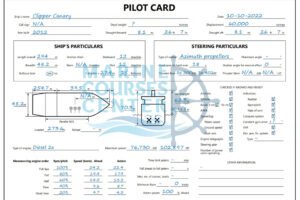Launching an Enclosed Lifeboat Safely: LSA and FFA Guidelines

Table of Contents

Launching an Enclosed Lifeboat Safely: LSA and FFA Guidelines
Safety should always be the top priority when launching an enclosed lifeboat. This article provides guidelines for launching an enclosed lifeboat and highlights important procedures that must be followed to ensure the safety of everyone on board.
Carrying out a Risk Assessment
Before launching an enclosed lifeboat, it is crucial to carry out a risk assessment to identify potential hazards that may arise during the process. This will help in taking appropriate measures to mitigate risks and prevent accidents.
Raising Alarm and Muster People
In case of an emergency, it is essential to raise an alarm and muster people to the designated area. A headcount must be taken, and everyone should be wearing their personal protective equipment (PPE) while being briefed on their assigned duties.
Securing Painters and Disconnecting Battery Connection
To ensure the safety of the crew on board the enclosed lifeboat, it is important to secure painters fore and aft. Additionally, the battery connection must be disconnected before proceeding with the launch.
Checking Engine and Rudder Movement
After securing the painters and disconnecting the battery connection, try out the engine ahead and astern for three minutes to ensure that it is functioning properly. Check the rudder movement to ensure that it is working effectively.
Removing Centre Gripe and Harbour Safety Pins
Once initial checks have been carried out, get out of the boat, remove the centre gripe, and remove the harbour safety pins. The fore and aft gripes must also be removed at this stage.
Lowering Embarkation Ladder and Reporting to the Master
Look overside and lower the embarkation ladder to ensure that it is safely positioned for boarding. Report to the master that all is clear and proceed to the next step.
Checking Speed and Boarding the Boat
Check the speed of the boat and ensure that it does not exceed 5 knots. Lower the boat by gravity and stop it just above the water level. All crew members must go down by ladder and board the boat. Ensure that everyone is seated and belted before proceeding.
Removing Fall Preventer Device and Closing Hatches
Remove the Fall Preventer Device (FPD) and close the hatches to ensure that the boat is watertight. Start the engine and check fore and aft movement while seated and belted.
Lowering the Boat and Releasing Hooks
Lower the boat into the water and release the hooks and painter. Close the hatches and drive away to a safe distance.
Conclusion
Following these guidelines for launching an enclosed lifeboat can help ensure the safety of everyone on board. It is crucial to carry out a risk assessment, raise an alarm, muster people, secure painters, disconnect the battery connection, check the engine and rudder movement, remove the centre gripe and harbour safety pins, lower the embarkation ladder, check the speed, board the boat, remove the FPD, close the hatches, lower the boat and release the hooks. By following these procedures, you can ensure a safe and successful launch of an enclosed lifeboat.
The Importance of Fall Preventer Device (FPD) in Lifeboat Safety
The Fall Preventer Device (FPD) is a critical safety system that is necessary for on-load release systems. The FPD helps to prevent the unintentional release of a lifeboat due to failure or misuse of its main method of connection to the fall wire.
In case of an emergency, the FPD ensures that the lifeboat remains attached to the ship until it is safe to release it. The FPD is designed to prevent accidental release of the lifeboat and ensures that it can only be released intentionally by the crew.
Without the FPD, there is a risk that the lifeboat could be accidentally released, causing injury or even loss of life. The FPD is therefore an essential safety feature that is required for all on-load release systems.
In summary, the FPD plays a vital role in ensuring the safety of lifeboats and their crew. It is essential to have the FPD installed and regularly maintained to ensure that it functions properly in case of an emergency. By using the FPD, we can prevent unintentional release of lifeboats and ensure the safety of everyone on board the ship.
Leave A Reply
You must be logged in to post a comment.




1 Comment